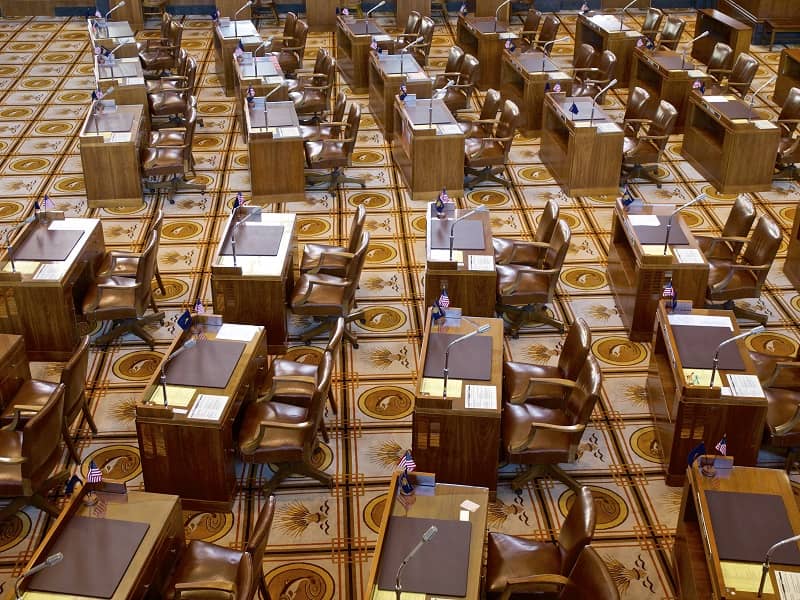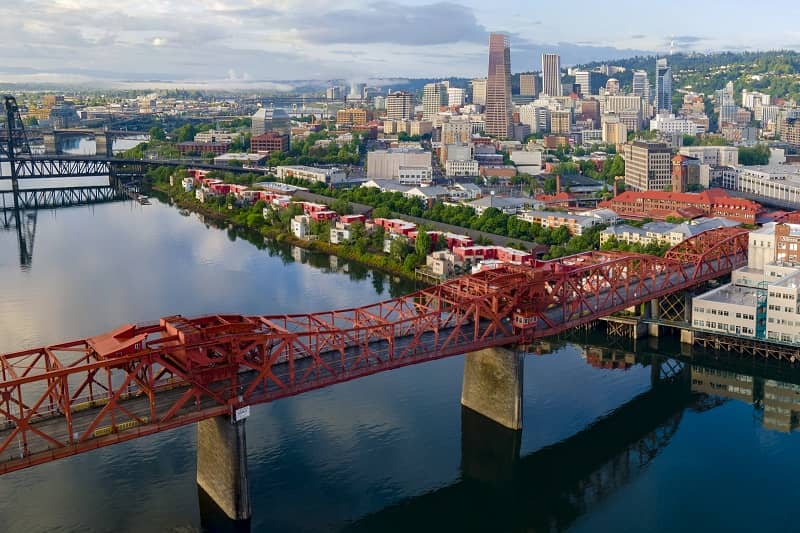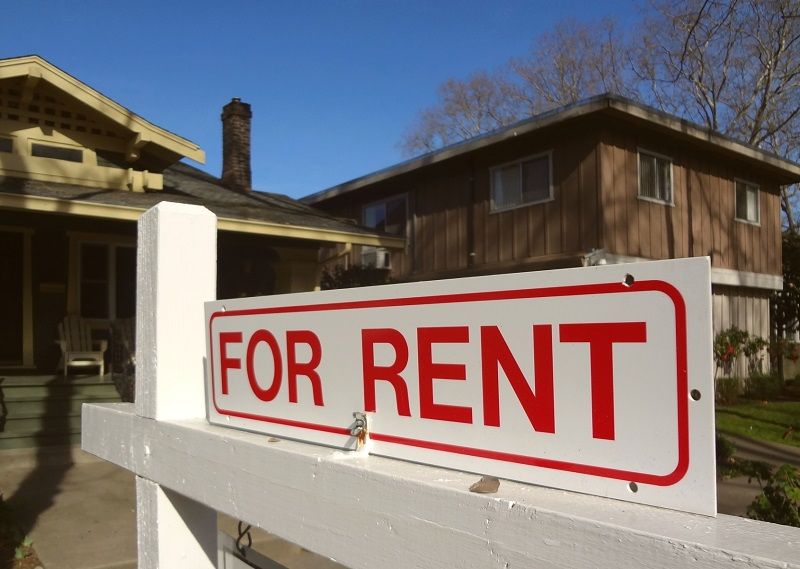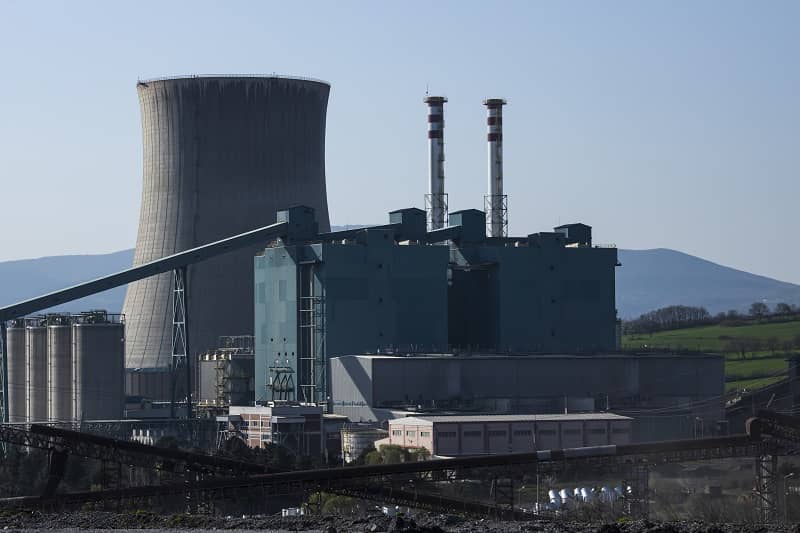Introduction
Climate change, and how to deal with it, is literally one of the hottest topics in state and national public policy. Because astonishing news sells, media coverage on climate change focuses on exaggerated claims of future catastrophe and proposes economically devastating “solutions” that may have no effect on global climate at all.
Unfortunately, misleading media reporting makes it difficult for citizens and legislators alike to discern fact from fiction. As an overview of topics pertinent to the 2009 session of the Oregon State Legislature, Cascade Policy Institute offers this “primer” on cap-and-trade issues in Oregon.
Senate Bill 80
Senate Bill 80 directs the Environmental Quality Commission to adopt by rule a greenhouse gas cap-and-trade system to achieve the state’s ambitious greenhouse gas reduction goals. Oregon would be one part of a regional cap-and-trade program through the Western Climate Initiative (WCI), an organization of 7 U.S. states and 4 Canadian provinces charged with developing regional strategies to reduce emissions.
There are many problems with implementing a cap-and-trade program in Oregon, but the main issue is that it would create excessive economic burdens and provide little or no environmental benefit. A cap-and-trade program for the state is truly an “all pain, no gain” strategy.
Even if a potential hazard exists from global warming, Oregon needs to think rationally and evaluate whether a policy like cap-and-trade will be effective in altering global temperatures. If the proposed solutions will not be able to turn down the global thermostat, there should be no reason to charge ahead with an ineffective policy that will do more harm than good.
Background on Cap-and-Trade and Regulating Greenhouse Gases
The interesting thing to note is that Oregon already has a cap on carbon dioxide. In 1997, Oregon passed the nation’s first law (House Bill 3283) regulating and attempting to reduce CO2 emissions from base-load natural gas plants, non-base load (peaking) power plants using any type of fossil fuel, and non-energy generating facilities that emit CO2. This bill simply resulted in a large tax on Oregonians and produced nothing in terms of reduced greenhouse gases. This is exactly what would result from a cap-and-trade program, as well.
Although Oregon plays a very minor role in greenhouse gas emissions due to our high use of hydroelectric power, Governor Ted Kulongoski announced his Climate Change Agenda on October 27, 2008, introducing a comprehensive legislative package that attempts to aggressively mitigate the impacts of global warming. The main feature of the agenda is the adoption of a regional cap-and-trade program through the Western Climate Initiative. The program “caps” total emissions at some arbitrary level and then issues permits, each of which allows a certain amount of emissions. This cap becomes more stringent over time. Coupled with population growth, emissions per capita would have to decline sharply in order to reach the ambitious goals. If a regulated facility wishes to emit more than its endowed permits allow, the facility must purchase permits in the market. Sellers would be those facilities that emit less than their permits allow—either because they have low-cost ways of reducing emissions, reduce their overall output or choose to go out of business. In theory, the trading of permits in the cap-and-trade program is supposed to be a cost-effective way to reduce greenhouse gases.
However, the truth is different from theory.
Economic Costs
An economic study, “Oregon Greenhouse Gas Reduction Policies: The Economic and Fiscal Impact Challenges,” was written and prepared under a contract between Cascade Policy Institute and QuantEcon, Inc. The study assessed the measurable and quantifiable costs of implementing a cap-and-trade program, or any other wide-ranging greenhouse gas reduction strategy, and found the costs to be tremendous.
The study predicts that Oregon’s economic growth to 2020 would be cut approximately in half. Under greenhouse gas reductions the Oregon economy would grow to only $58.9 billion, compared to the baseline of $107.2 billion.
Greenhouse gas reductions would result in 90,000 fewer Oregon jobs than would have existed in the absence of reductions; and 2020 state and local revenues would be $4.4 billion dollars lower, making it even more difficult to fund social programs and help households adapt to significantly higher fuel and energy prices.
Another independent economic analysis, still in its draft form, was undertaken assessing the potential costs to Oregon if cap-and-trade were to be implemented. “The Economic Analysis of the Western Climate Initiative’s Regional Cap-and-Trade Program” was written and prepared by the Beacon Hill Institute (BHI) at Suffolk University. BHI found that implementing a cap-and-trade program would significantly decrease employment and personal income for the state.
The authors find that up to 14,806 private sector jobs could be lost in Oregon by 2020. BHI also finds that total personal income would fall by $298.76 to $862.09 million per year in the state.
“Benefits” of a Cap-and-Trade Program
Many advocates of a cap-and-trade program will profess that it is necessary to endure some economic costs to reap the benefits of reduced global temperature due to greenhouse gas reductions in Oregon. Unfortunately, the reality is that reducing greenhouse gases on a statewide or regional level would do nothing to adjust the global thermostat; and assuming that the rest of the world will agree to greenhouse gas reduction goals and actually achieve those goals is unrealistic.
Recently, a Science and Public Policy Institute study was completed, assessing the possible “climate stabilization” effect of a complete cessation of state and nationwide emissions. Complete cessation means that there would be no fossil fuel power plants or even a single internal combustion engine. This is obviously well beyond the scope of Oregon’s cap-and-trade program.
If all of the seven states included in the Western Climate Initiative’s cap-and-trade program completely reduced their emissions to zero immediately and continued this into the future, by 2050 there would be only a 0.014 degree Celsius change in global temperature. By 2100, there would be a mere 0.021 degree Celsius change, not enough to even accurately measure. Moreover, the Oregon contribution to any reduction in global temperature would be only a tiny fraction of that.
In fact, if Oregon completely reduced its emissions to zero now and into the future, the reductions in greenhouse gases would be completely replaced by foreign growth in 16 days. The growth in China alone would replace any Oregon emissions reductions in 25 days.
Another way to assess the possible environmental benefit of cap-and-trade in Oregon is how much carbon dioxide actually will be reduced in the atmosphere due to this policy.
The amount of carbon dioxide in the atmosphere is measured in parts per million (ppm). As of 2008, the earth’s atmosphere contains approximately 387 ppm of carbon dioxide, of which 3.2% is considered of human origin. 22% of this is emitted in the United States, and of that Oregon represents 0.7%. The sectors that initially would fall under a cap in Oregon would be industry and electric utilities, which emit 54% of CO2 emissions in Oregon (387 x 3.2% x 22% x 1% x 54% = .01 ppm). This means that completely shutting down industry and electric utilities in Oregon (well beyond the scope of a cap-and-trade program) would reduce global CO2 by an insignificant 1/100th of a ppm, not even a measurable amount. Because the atmosphere concentration of CO2 has been increasing by about 1 to 2 ppm per year, we would need to completely shut down industry and electric utilities in over 100 Oregons in order to reverse just one year’s global growth of CO2.
Alternative Strategies
A number of specific policies could be enacted on a “no-regrets” basis. That is, these policies make sense for other reasons, and therefore do not have to be justified on the rationale of “preventing climate change.” Some of those policies include:
? Replace broad-based transportation taxes and subsidies with direct user charges, at least on the highly travelled state highway system. In the congested Portland region, utilize peak-period highway pricing, also known as congestion pricing. Transportation is the largest source of carbon dioxide in Oregon, yet it is exempt from direct regulation under the WCI cap-and-trade program. Congestion pricing is a high-leverage strategy because traffic congestion is, by itself, a major source of excess fuel consumption and carbon dioxide emissions. Empirical evidence from California freeways shows that CO2 emissions per mile in free-flow traffic are 60-90% lower than emissions generated in stop-and-go conditions. Since ensuring free-flow travel conditions at all times has tremendous net economic benefits and should be implemented for those reasons, the GHG reduction benefits are simply a “bonus” with no additional costs.
? Provide the electorate with an opportunity to vote on legalizing nuclear power in Oregon again. This probably should be considered the litmus test of the Oregon legislature’s commitment to de-carbonization. It is one of the only emission-free sources that can provide reliable and consistent base load power at an affordable rate.
? Address the threat of catastrophic forest fires on public lands in Oregon. Forest fires are a large and growing source of CO2 emissions. Emissions per acre of timberland can be reduced by approximately 67% through proper thinning of overgrown stands. The Oregon legislature should demand more active management on all public forestlands in Oregon, especially those owned by the federal government. Proper thinning and biomass utilization can create market opportunities for electricity generation, thereby supporting several state policy goals.
? Allow the market to continue responding to its natural incentive to minimize costs, including energy. The amount of energy per dollar of GDP has declined steadily for 50 years. In fact, the energy intensity of the Oregon economy (energy consumed per unit of GDP) decreased by 91% between 1963 and 2005.This trend can be accelerated through technological research and deployment. The legislature can help by eliminating corporate income taxes and keeping capital gains taxes low. Investment in better technology is the only real sustainable path to greenhouse gas reductions.
Conclusion
Unfortunately, Oregon is focused on implementing greenhouse gas regulations like the Western Climate Initiative’s cap-and-trade program without truly assessing any possible global warming mitigation benefit. A cap-and-trade program for Oregon is essentially a complex tax on energy that will have a direct and negative effect on businesses and individuals while offering little or no environmental benefit.











